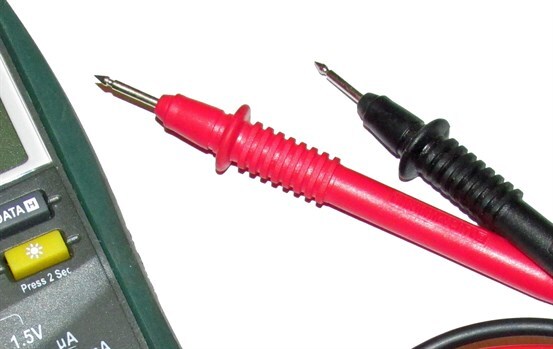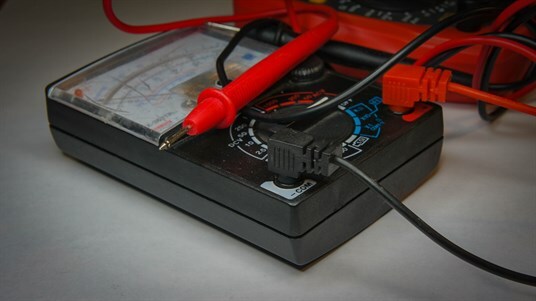How to diagnose faulty glow plugs in 10 steps

It is important to regularly check and maintain glow plugs/ignition components, especially before winter season. If you or a customer has spotted a potential sign that their glow plugs are faulty, or at the end of their lifespan, the next step is to accurately establish whether replacement plugs are needed. Thankfully, this is easier than ever to do, and can usually be achieved without removing the glow plug from the engine. All you need is a multimeter and these 10 steps:
1: Get to know your multimeter
In essence, a multimeter is a box of electronic circuitry that can be used to run a variety of tests on electrical wiring or devices (hence its name ‘multimeter’: multiple measurements). You may be extremely familiar with your model of multimeter already – but if not, here is a refresher:
- The large dial in the center of the multimeter is used to adjust the settings.
- The leads that come with the multimeter are used to test electrical current and resistance. These leads will be black (negative) and red (positive), and usually have metal clamps or pins at the end of them. The pictured example has pins.

- A multimeter may be analog or digital. Analog multimeters have a changing display, which means they can show you the current fluctuation. Digital multimeters show a definitive figure, which means they have a difficult time measuring current that is constantly changing. However, digital multimeters are more accurate overall than analog meters. Analog meters can also apply higher voltage to the circuit digital meters, so use them with care.
It is best to use a digital multimeter for this test. It will show the exact result of the test, while an analog meter will list a range of results, making it harder to read/conclude. If you are using an analog multimeter, make sure to choose one with at least 20kohm/V sensitivity.

2: Set your multimeter to Ohms
While the multimeter can seem daunting because of its many numbers and dials, you only need to use one setting for this test: Ohms. The ohms setting will be denoted by the omega symbol (Ω) resembling a horseshoe. Unless you have an auto-ranging multimeter, you will also be able to set the maximum range for the test. You can always change this during the test if you find you aren’t getting a useful reading,
3: Find the resistance value of your multimeter
Connect the two leads of the multimeter together, making sure the metal clamps/pins on the leads touch each other, and record the result. If you are using a digital multimeter, the precise reading will appear across the screen. At this point you may be able to use your multimeter’s calibration function to adjust the reading to zero.
4: Test the voltage of the battery
Put your multimeter in DC Volt reading mode. The symbol denoting DC is ⎓: two lines, one solid and one dotted. Place the negative lead of your multimeter onto the negative terminal of the car battery, and the positive lead onto the positive terminal. The reading should be close to 12.5 Volts when the car is off and close to 13 Volts when the car is running. If this is not the case, check your battery or alternator before proceeding, since they may be the cause of the issue rather than the glow plugs. Glow plugs only work correctly if they have the correct voltage running into them.
5: Locate the glow plugs
The location of the glow plugs in the engine will vary based on the make and model of the respective vehicle. Consult the manufacturer’s handbook for the vehicle to find the correct location.
6: Remove the caps or connectors to the glow plugs
There is usually a cover or cap over the glow plugs. Removing this will allow you to apply the multimeter clamps to the glow plugs. Look at the connector and pins for any signs of rust, corrosion or looseness. Take this opportunity to clean them. This alone could have a beneficial effect.
7: Connect the multimeter’s negative lead to a ground point in the engine
The main two ground points can be found by following the wire that leads from the negative battery terminal into the engine wall or following the wire that leads from the alternator into the engine wall. Again, you can consult the manufacturer’s handbook to find the exact locations of the ground points.
The wires will be attached to bolts. Clip the negative lead onto one of these bolts for grounding.
8: Connect the multimeter’s positive lead to the top of the glow plug
The multimeter should now give a reading. This is when you can adjust the range setting on the multimeter to give more significant figures, if required.

9: Evaluate the multimeter’s reading
Refer to your shop manual to determine the acceptable resistance range for glow plugs in this vehicle – usually it will be no more than 6 Ohms.
Subtract the resistance value of your multimeter from the resistance value of your glow plug. For example, if your plug's resistance measured .9 ohms and your meter's resistance measured .2 ohms, the real reading for the plug is .7 ohms. If you zeroed the multimeter resistance earlier, you don’t have to subtract anything now.
All the glow plugs in your engine should have similar readings. One glow plug with a higher resistance can affect your engine's performance – even if the plug appears functional otherwise.
10: Replace the glow plugs
If one or more of the glow plugs gives an unusually high reading, it should be replaced. However, we suggest that you replace every plug – not just the one that appears to be faulty!
If the area around the glow plugs has dirt or build-up, clean it first. Some manufacturers offer special tools (“reamers”) to clean out the bore where the glow plugs are inserted into the cylinder head. These tools clean out carbon build-up inside the combustion chamber or pre-charge chamber, as well as the threads that the glow plug screws into.
DENSO Aftermarket Glow Plugs

DENSO has a history of pioneering innovation in diesel engine components, always making improvements to quality and efficiency. It introduced the first ceramic glow plugs for the OE market, and was behind the first common-rail diesel engine in a production vehicle.
Today, DENSO offers its product and engineering expertise to the aftermarket, including an all-makes, OEM-quality glow plug program. With fast heat-up times, long-lasting post-heat temperatures and excellent car parc coverage with a simple part reference system, DENSO Glow Plugs are designed to support the aftermarket in every way possible.
